- Joined
- Jul 1, 2014
- Messages
- 3,641 (0.96/day)
The gift that is CES keeps on giving! We go over the NETGEAR suite, and it was more of an entire floor, in this article with the company showing off their involvement in every networking sector imaginable- the professional environment, consumer and retail networking solutions, and smart home devices. Indeed, stepping off the elevator itself led to a hallway lined with Meural canvasses, which are very well built frames that have an integrated display to show off images of your choosing. This public hallway had generation 2.0 canvasses, with the new-for-CES generation 3.0 series inside the show room that encompasses four different frame options in two different sizes- the currently available 27" version, and the newer 21.5" size for those wanting something smaller.
Meural canvasses can be used in landscape or portrait configurations, and supports a library of over 30,000 curated art images at an optional membership cost of $49.95/year. The new generation is available from August 2019, with the new screens having a wider color gamut and a truer-to-life display, that was impressive. These are definitely for a niche audience, however, but I can appreciate NETGEAR wanting to provide more use cases for their networking solutions. The current Gen 2.0 27" canvas starts at $595 (dimensions with the frame are larger than 27"), and an optional pivoting stand with more display I/O options is an additional $49.95 for when you want to have your own images connected to it. For the rest of the tour, be sure to read past the break!

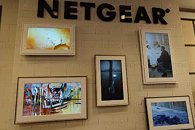
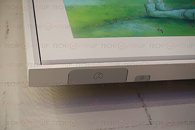

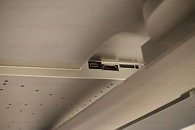
Also in the hallway was a NETGEAR business demo unit of a server rack switch, configurable to handle up to 4 simultaneous displays off a single 1G/10G unit using AV-over-IP. The switch setup is a 2u unit with 12 slots to fill in as desired, if you wanted to run more displays simultaneously with the demo station having two slots filled in. Use cases here involve, say, live simultaneous broadcast of music performances or sports programs to screens in a theater or stadium, but NETGEAR tells us they have had interest also from the prosumer market of streamers managing gaming events and LAN parties as well. An easy-to-use configurator provides admin access to each individual unit, and there can of course be more such units daisy-chained if need be.
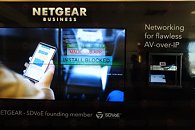
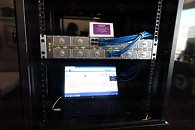
The entire new NETGEAR offering for small- to medium-sized businesses includes their Smart Managed Pro S350 IPV6-ready switch series with five new switches in total (8-48 GigE port options with 2/4 SFP ports for fiber uplink and POE+ on select units), a new Orbi Pro mesh Wi-Fi ceiling satellite with POE (power over ethernet) and 4x4 MU-MIMO Wi-Fi, a NETGEAR Insight Managed Smart Cloud tri-band wireless access point (the WAC540) rated for a total of 3 Gbps throughput performance, and the WAC124 AC200- Wi-Fi router.
Heading back inside the room, we saw their entries to the relatively new Nighthawk Pro Gaming lineup, including the XR500 we reviewed before, the 10 GigE SX10 switch we will be checking out soon, and the newer XR700 that offers more performance relative to the XR500 and runs off the same, excellent Duma OS which has, since the time of our review of the XR500, added in more features including a ping-based geo-filter, more VPN support integrated in the configurator, and a summary table view of connected device with real-time stats.
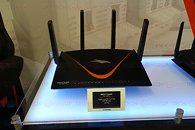
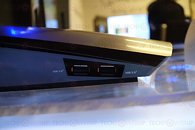
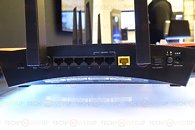
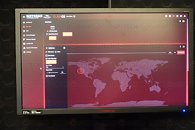
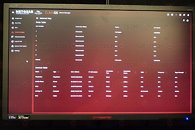
Next up were additions to their Nighthawk series in general, including two new Wi-Fi extenders and two standalone routers. The NETGEAR Nighthawk EX6250 is a dual band Wi-Fi extender rated at AC1750 for throughput, whereas the Nighthawk X6 EX7700 is a tri-band extender with a dedicated backhaul for proper mesh networking without loss of throughput from the main router, and is rated for AC2200 operation. The standalone routers were both compliant to the new WiFi-6 (Wireless AX) standard, and received CES innovation awards as well. Both adopt a more subtle form factor compared to erstwhile units with multiple discrete antennas pointing upwards, with MU-MIMO and beam forming effectively reducing the need for this and allowing for a more pleasing look in general. The Nighthawk AX8 is an 8-stream router rated at AX6000 throughput, and the AX12 is a 12-stream version that also includes a multi-Gig (1/2.5/5 GigE) port on the back and a fan for active cooling.
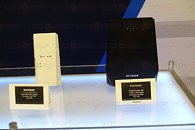
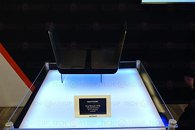
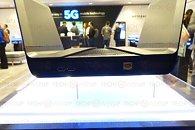
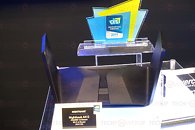
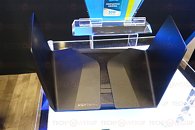
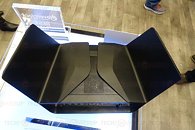
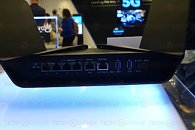
5G and LTE-based mobile networks were a big theme at CES this year, and NETGEAR showed off mobile routers for both applications, including their new Nighthawk MR5000- the world's first millimeter wave 5G mobile hotspot. Effectively controlled by network providers such as AT&T and Verizon in the USA more so than NETGEAR, however, it won't do much good to have the hardware ready but be nerfed by data and speed caps imposed on them. Time will tell how 5G influences the market, but for now the company also showed the Nighthawk M2 (MR2100) update to their LTE mobile router.
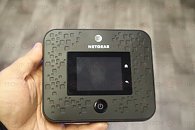
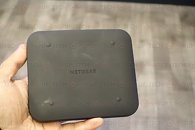
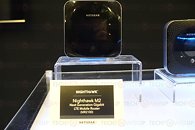
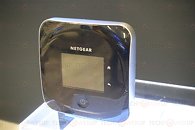
The tour ended at the Orbi section, which had new (first at CES and also recently announced) additions to their more user-friendly mesh Wi-Fi system lineup, including the outdoor satellite with IP4x rating for dust and rain storms, an Alexa-compatible Orbi Voice smart speaker and mesh satellite, a cable modem + router Wi-Fi combination unit, and the new Orbi Wi-Fi 6 system supporting the new standard. This last demo was based off the existing RBK50, which will debut in the AX6000 format in the second half of this year bringing with it 1024 QAM with a 4x4 Wi-Fi 6 backhaul for even higher increased speed, coverage, and capacity- especially between the router and the satellite units.
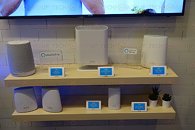
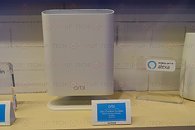
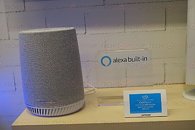
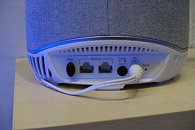
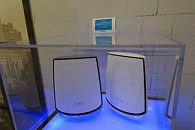
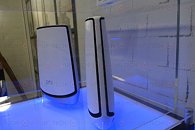
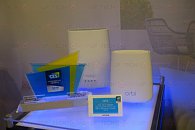
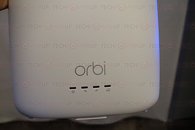
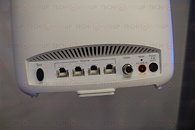
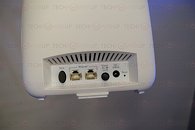
NETGEAR also showed off enhancements to their software end, with Insight management for the pro side and NETGEAR Armor cybersecurity for the Orbi family, in addition to quality-of-life improvements to the Nighthawk and Orbi mobile apps as they attempt to move away from NETGEAR Genie. Some of my complaints from last year were already addressed, which is nice to see, and the product managers for the different business units were receptive to feedback across the board as well.
View at TechPowerUp Main Site
Meural canvasses can be used in landscape or portrait configurations, and supports a library of over 30,000 curated art images at an optional membership cost of $49.95/year. The new generation is available from August 2019, with the new screens having a wider color gamut and a truer-to-life display, that was impressive. These are definitely for a niche audience, however, but I can appreciate NETGEAR wanting to provide more use cases for their networking solutions. The current Gen 2.0 27" canvas starts at $595 (dimensions with the frame are larger than 27"), and an optional pivoting stand with more display I/O options is an additional $49.95 for when you want to have your own images connected to it. For the rest of the tour, be sure to read past the break!





Also in the hallway was a NETGEAR business demo unit of a server rack switch, configurable to handle up to 4 simultaneous displays off a single 1G/10G unit using AV-over-IP. The switch setup is a 2u unit with 12 slots to fill in as desired, if you wanted to run more displays simultaneously with the demo station having two slots filled in. Use cases here involve, say, live simultaneous broadcast of music performances or sports programs to screens in a theater or stadium, but NETGEAR tells us they have had interest also from the prosumer market of streamers managing gaming events and LAN parties as well. An easy-to-use configurator provides admin access to each individual unit, and there can of course be more such units daisy-chained if need be.


The entire new NETGEAR offering for small- to medium-sized businesses includes their Smart Managed Pro S350 IPV6-ready switch series with five new switches in total (8-48 GigE port options with 2/4 SFP ports for fiber uplink and POE+ on select units), a new Orbi Pro mesh Wi-Fi ceiling satellite with POE (power over ethernet) and 4x4 MU-MIMO Wi-Fi, a NETGEAR Insight Managed Smart Cloud tri-band wireless access point (the WAC540) rated for a total of 3 Gbps throughput performance, and the WAC124 AC200- Wi-Fi router.
Heading back inside the room, we saw their entries to the relatively new Nighthawk Pro Gaming lineup, including the XR500 we reviewed before, the 10 GigE SX10 switch we will be checking out soon, and the newer XR700 that offers more performance relative to the XR500 and runs off the same, excellent Duma OS which has, since the time of our review of the XR500, added in more features including a ping-based geo-filter, more VPN support integrated in the configurator, and a summary table view of connected device with real-time stats.





Next up were additions to their Nighthawk series in general, including two new Wi-Fi extenders and two standalone routers. The NETGEAR Nighthawk EX6250 is a dual band Wi-Fi extender rated at AC1750 for throughput, whereas the Nighthawk X6 EX7700 is a tri-band extender with a dedicated backhaul for proper mesh networking without loss of throughput from the main router, and is rated for AC2200 operation. The standalone routers were both compliant to the new WiFi-6 (Wireless AX) standard, and received CES innovation awards as well. Both adopt a more subtle form factor compared to erstwhile units with multiple discrete antennas pointing upwards, with MU-MIMO and beam forming effectively reducing the need for this and allowing for a more pleasing look in general. The Nighthawk AX8 is an 8-stream router rated at AX6000 throughput, and the AX12 is a 12-stream version that also includes a multi-Gig (1/2.5/5 GigE) port on the back and a fan for active cooling.







5G and LTE-based mobile networks were a big theme at CES this year, and NETGEAR showed off mobile routers for both applications, including their new Nighthawk MR5000- the world's first millimeter wave 5G mobile hotspot. Effectively controlled by network providers such as AT&T and Verizon in the USA more so than NETGEAR, however, it won't do much good to have the hardware ready but be nerfed by data and speed caps imposed on them. Time will tell how 5G influences the market, but for now the company also showed the Nighthawk M2 (MR2100) update to their LTE mobile router.




The tour ended at the Orbi section, which had new (first at CES and also recently announced) additions to their more user-friendly mesh Wi-Fi system lineup, including the outdoor satellite with IP4x rating for dust and rain storms, an Alexa-compatible Orbi Voice smart speaker and mesh satellite, a cable modem + router Wi-Fi combination unit, and the new Orbi Wi-Fi 6 system supporting the new standard. This last demo was based off the existing RBK50, which will debut in the AX6000 format in the second half of this year bringing with it 1024 QAM with a 4x4 Wi-Fi 6 backhaul for even higher increased speed, coverage, and capacity- especially between the router and the satellite units.










NETGEAR also showed off enhancements to their software end, with Insight management for the pro side and NETGEAR Armor cybersecurity for the Orbi family, in addition to quality-of-life improvements to the Nighthawk and Orbi mobile apps as they attempt to move away from NETGEAR Genie. Some of my complaints from last year were already addressed, which is nice to see, and the product managers for the different business units were receptive to feedback across the board as well.
View at TechPowerUp Main Site



 . Hopefully Netgear has paid attention and doesn't screw it up.
. Hopefully Netgear has paid attention and doesn't screw it up.